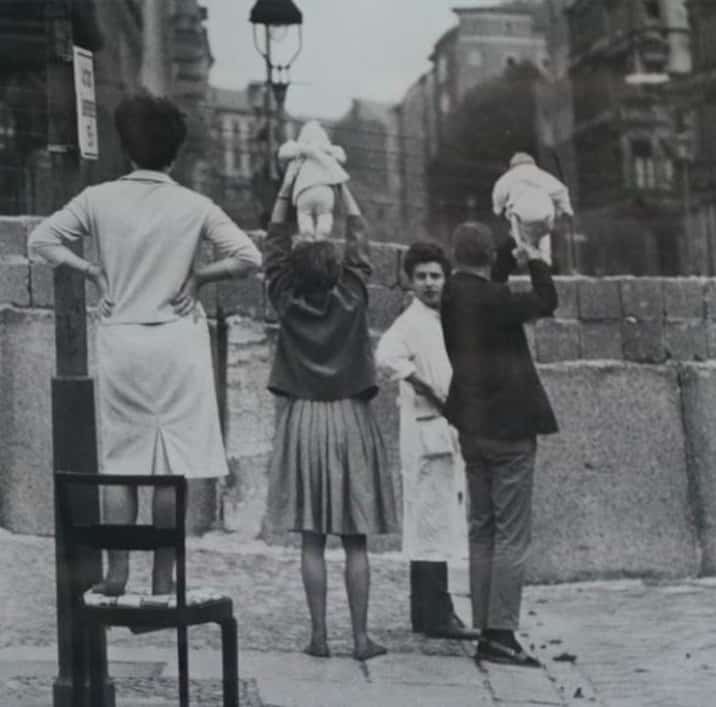
ADVERTISEMENT - CONTINUE READING BELOW
West Berliners Show Children to Grandparents on Other Side of Berlin Wall
The Berlin Wall became an iconic and tragic symbol of 20th century Germany. It’s hard to find traces of the Berlin Wall, which divided the German capital a quarter-century ago. Like most symbols during this time, the infamous barrier was dismantled. But not before wreaking sadness and tragedy amongst the residents of Berlin. On August 13, 1961, the Communist government of the German Democratic Republic (GDR, or East Germany) began to build a barbed wire and concrete “Antifascistischer Schutzwall,” or “antifascist bulwark,” between East and West Berlin.
Before the wall was built, Berliners on both sides of the city could move around fairly freely: They crossed the East-West border to work, to shop, to go to the theater and the movies. Trains and subway lines carried passengers back and forth. After the wall was built, it became impossible to get from East to West Berlin except through one of three checkpoints. The Berlin Wall stood until November 9, 1989, when the head of the East German Communist Party announced that citizens of the GDR could cross the border whenever they pleased. That night, ecstatic crowds swarmed the wall. Some crossed freely into West Berlin, while others brought hammers and pick and began to chip away at the wall itself. To this day, the Berlin Wall remains one of the most powerful and enduring symbols of these dark days.

